Proving a concept
I designed the companion app for a running training device MVP.
Trackpacer is a strand of LEDs, embedded into a running track. When running, a beam of light orbits the track, giving runners an object to pace themselves against. Conceptually, it's similar to the mechanical lures that are used in dog racing.
I worked on the iOS app that allowed a user to operate Trackpacer.
Here's a quick video of it in action, shot at CU-Boulder. If you're curious about how it was built, check out the case study.
The App
Controls are kept simple: a user can connect, start, and stop the trackpacer depending on the mode. The pacer's starting spot on the track can be set through direct manipulation by dragging the light around the track. Stored exercises can can be accessed by flicking the UI left and right. While it's running, we ensure users can't accidentally alter the settings.
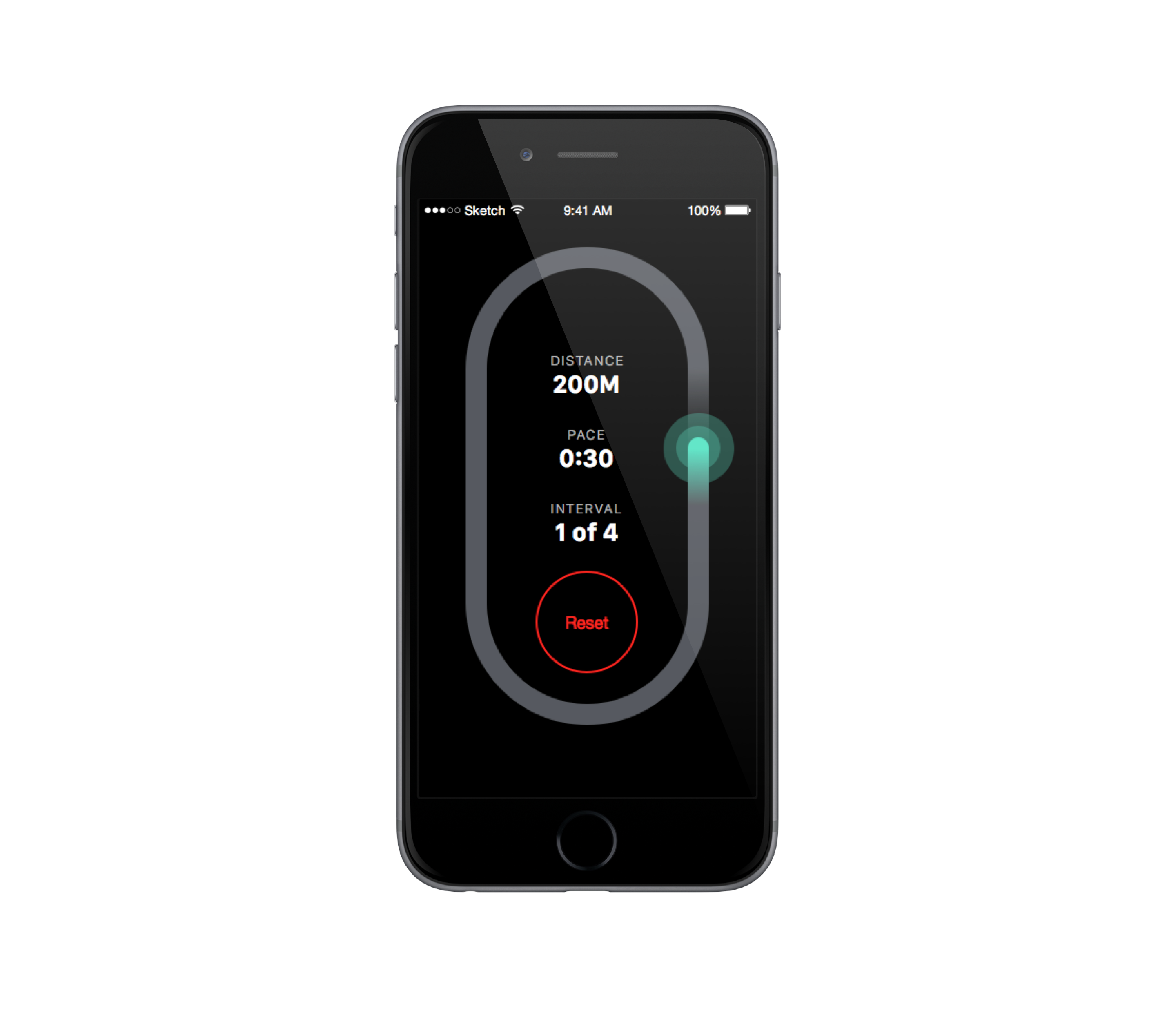
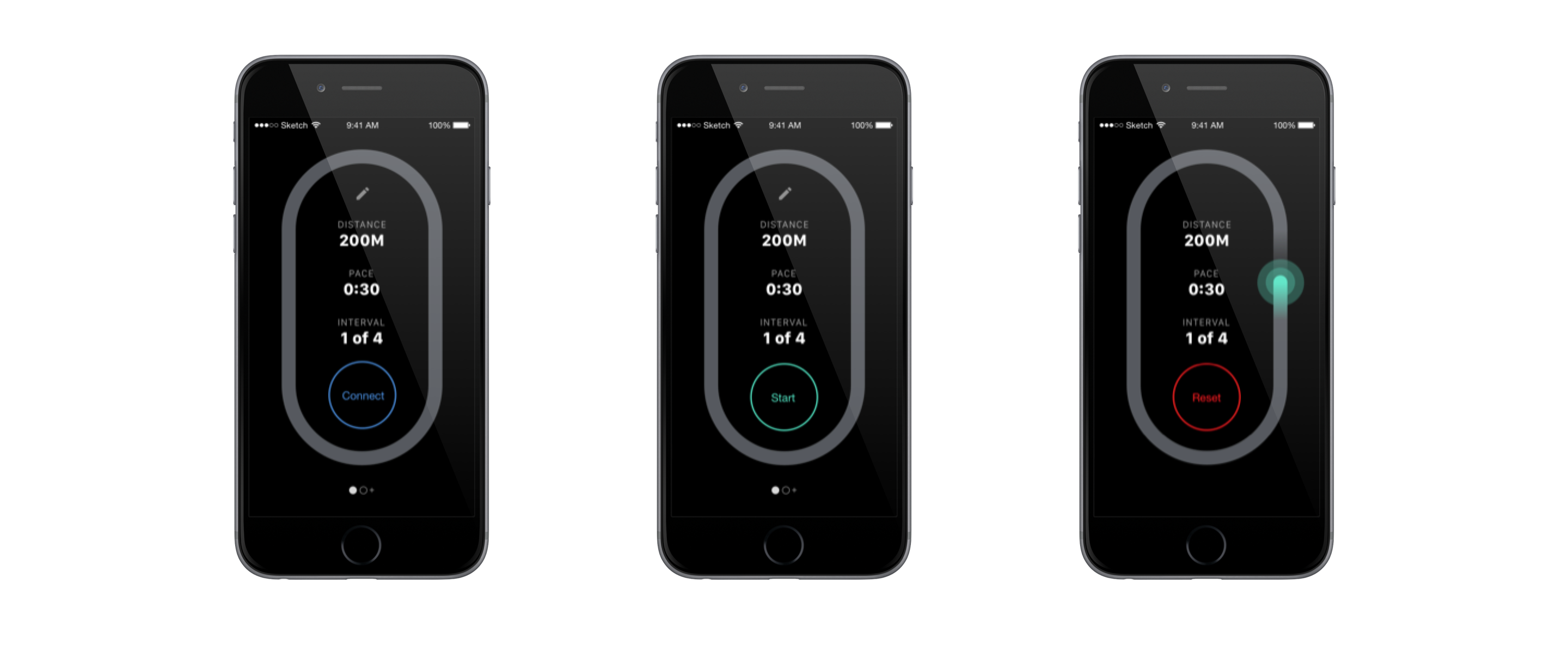
Sharing control
Only one phone can control Trackpacer at a time. In some cases, it's important to hand-off control from one person to another. In these cases, the requestor can press a button which messages the current owner. That person can pass control—or ignore the request.
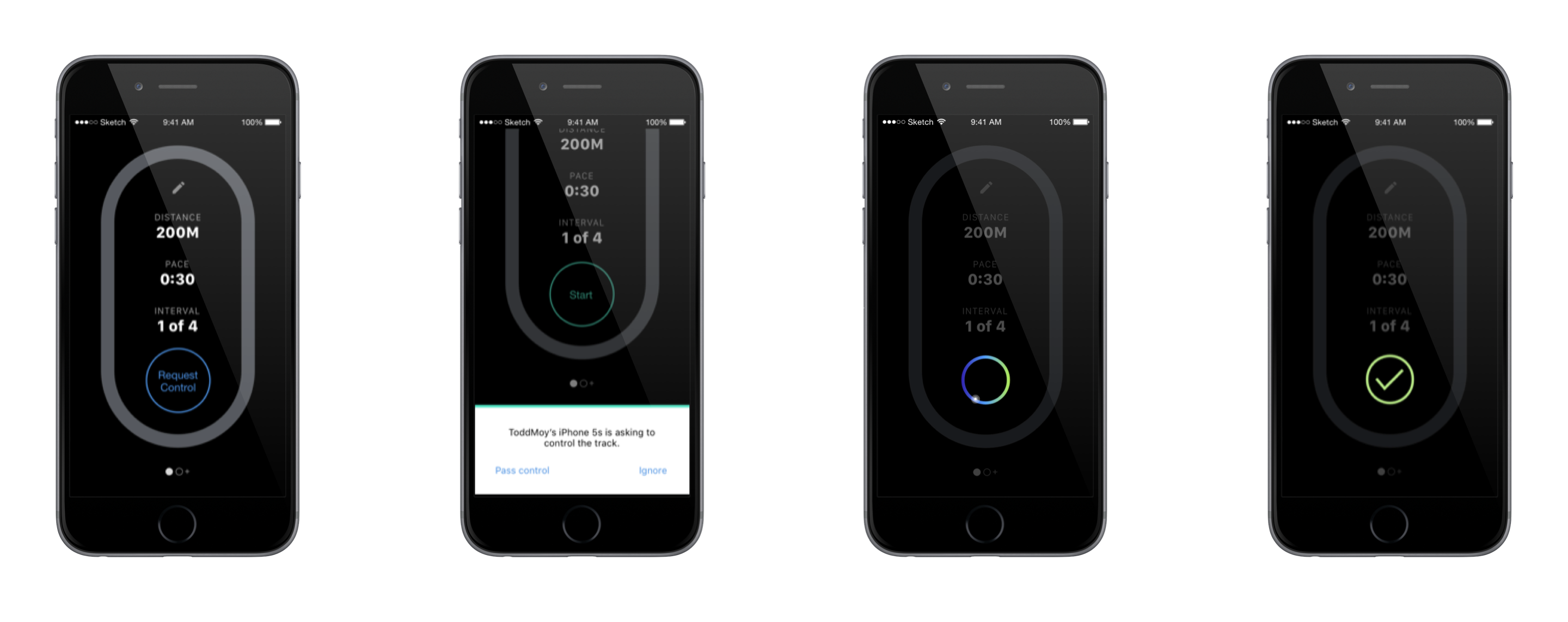
Changing settings
Changing settings is quick and error-free. Users can swipe between common settings like distance, pace, intervals, and pacer color. In cases where they want to input custom values like distance, a custom keyboard guards against bad input.
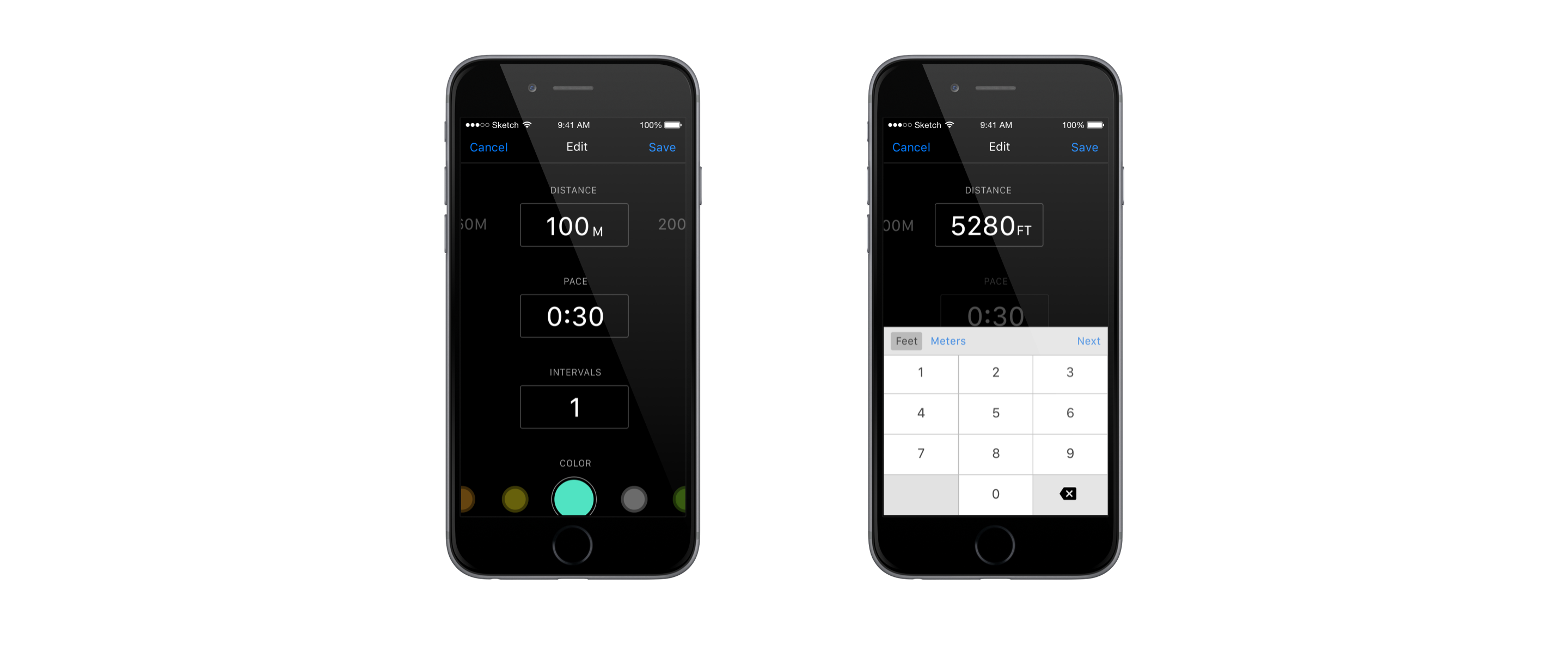
Watch
The user interface translates nicely down to wearables. I concepted an Apple Watch companion app, which would free up coaches' hands to record observations about their runners.
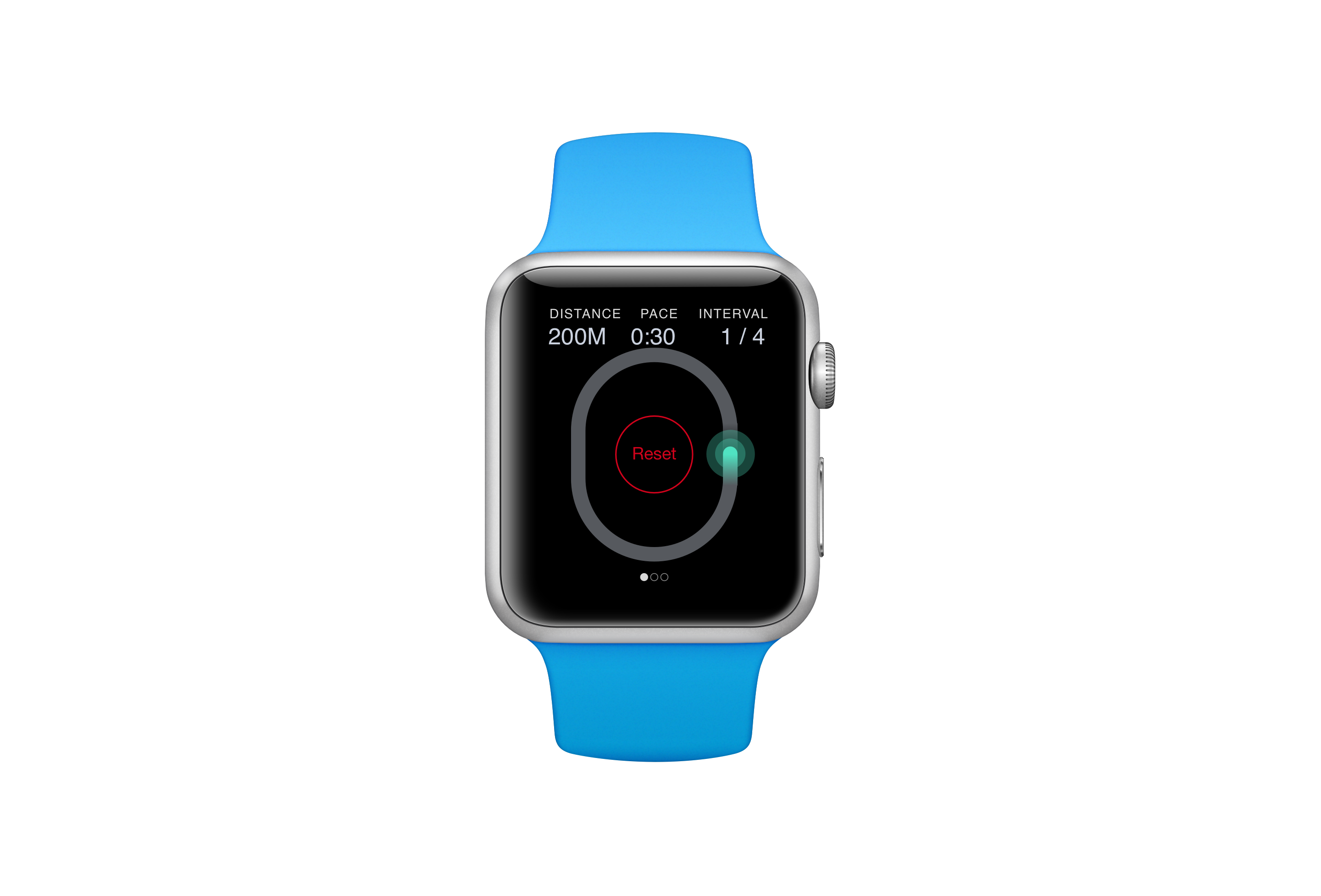
Results
Galvanized from the first test, the Trackpacer team is currently shopping the idea around with university running programs.